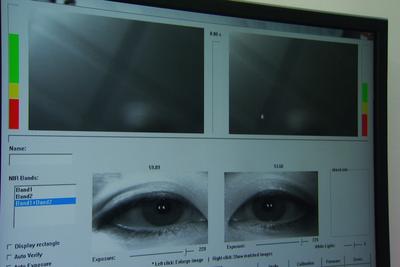
Without public notice, Los Angeles County law enforcement officials are building a massive database of biometric information, including iris scans. If you’re stopped by a sheriff’s deputy in Los Angeles County, get ready to have your photo taken. The sheriff’s department will equip deputies with mobile facial recognition technology to expand the largest biometric database outside of the FBI, according to procurement documents.
A $3.5 million contract with DataWorks Plus LLC that was unanimously approved by the Los Angeles County Board of Supervisors provides a seven-year extension to the sheriff’s existing lease for Cognitec Systems’ facial recognition software and hardware – including servers and hundreds of smartphones and tablets – that deputies will use to identify people whom they encounter in the field.
The documents also indicate that the technology will have the ability to compile watch lists , which Los Angeles-area law enforcement officers have used to identify people who have open warrants or were documented as active gang members.
Last fall, Reveal uncovered the Los Angeles sheriff’s department initiative to build a massive database of biometric information – fingerprints, iris scans, palm prints and, potentially, voice recordings – taken from arrestees and other people who are stopped by deputies in public.
Sheriff’s deputies have been collecting fingerprints with mobile devices for years. However, the new contract significantly increases the number of devices used by deputies to run images of people through the software to identify wanted individuals.
Information on up to 15 million people will be stored in L.A. County’s biometric database. According to the sheriff’s department, there are approximately 6 million photos in its mug shot database.
The L.A. County sheriff’s department, the largest independent local law enforcement agency in the country, is building its own biometric database as part of a national initiative by the FBI to switch its databases of criminal information from fingerprints to biometric identifiers.
Facial recognition, Thai said, is not proof of a positive identification but a sophisticated tool that helps narrow down potential suspects.
“We don’t say facial rec is a positive ID – it’s a lead,” he said. “Once we submit a picture to the system, either the Cognitec or NEC software will give you a list of potential matches, and then from there, the detective will have to do legwork.”
Source: revealnews.org
